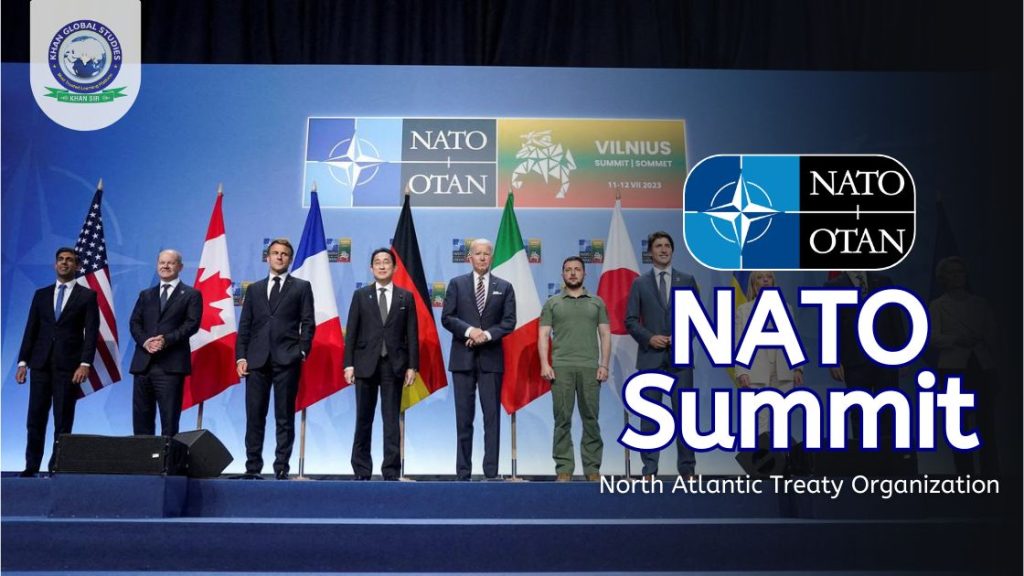In the field of global politics, the NATO summit stands as a significant event shaping alliances, strategies and international security. But what exactly is a NATO summit? Let us look into its overview, history, significance and interesting facts that define this important gathering of world leaders.
NATO Summit Overview
The NATO summit represents the gathering of the North Atlantic Treaty Organization, a political and military alliance of 30 countries in North America and Europe. Established in 1949, NATO’s primary purpose is to protect the freedom and security of its members through collective defence and cooperation.
The summit brings together leaders of member countries to discuss and strategize on important issues related to defence, security and global stability. The summit serves as a platform to promote dialogue, resolve disputes and strengthen the alliance’s unity in the face of emerging geopolitical challenges.
A Brief History of NATO Summits
The NATO summit originated in the post-World War II period, a period marked by rising tensions between the United States and the Soviet Union and the emergence of the Cold War. In response to growing Soviet influence in Eastern Europe, Western countries sought to create a collective defence alliance to deter aggression and promote stability.
In April 1949, Washington, D.C. The North Atlantic Treaty was signed in 1915, laying the foundation for NATO. NATO’s inaugural summit took place in 1957, setting a precedent for periodic meetings between member states’ leaders to address security concerns, coordinate military strategies, and reaffirm mutual commitments to the alliance’s principles.
NATO Summit Members
Sure enough, here are the 30 countries that are members of NATO:
| Sr. No. | Country | Sr. No. | Country | Sr. No. | Country |
| 1 | Albania | 11 | Greece | 21 | Norway |
| 2 | Belgium | 12 | Hungary | 22 | Poland |
| 3 | Bulgaria | 13 | Iceland | 23 | Portugal |
| 4 | Canada | 14 | Italy | 24 | Romania |
| 5 | Croatia | 15 | Latvia | 25 | Slovakia |
| 6 | Czech Republic | 16 | Lithuania | 26 | Slovenia |
| 7 | Denmark | 17 | Luxembourg | 27 | Spain |
| 8 | Estonia | 18 | Montenegro | 28 | Turkey |
| 9 | France | 19 | Netherlands | 29 | United Kingdom |
| 10 | Germany | 20 | North Macedonia | 30 | United States of America |
Importance of NATO Summit
The importance of the NATO summit cannot be underestimated, as it serves as a forum to advance shared security interests, promote transatlantic cooperation, and adapt to emerging security threats. Key areas of focus at the summit include:
- Collective Defence: Strengthening NATO’s collective defence capabilities to deter potential adversaries and respond effectively to security challenges.
- Strategic Partnership: To develop partnerships with non-NATO countries and international organizations to enhance global security and stability.
- Cyber Security: Addressing the growing threat of cyber attacks and strengthening cyber security measures to protect critical infrastructure and communication networks.
- Counter-Terrorism: To coordinate efforts to combat terrorism and disrupt extremist networks through intelligence sharing, military cooperation and capacity building.
- Defence Expenditure: Ensuring equitable burden-sharing among NATO members by meeting defence expenditure targets and investing in modernizing military capabilities.
Facts about the NATO Summit
- NATO summits typically take place every one to two years, with the location varying between member states.
- The largest NATO summit to date was held in Warsaw, Poland in 2016, with leaders of all member states in attendance.
- Decisions taken at NATO summits are based on consensus, which requires unanimity among member states.
- The NATO Secretary General plays a key role in facilitating discussions and implementing the summit’s outcomes.
Conclusion
Finally, the NATO summit serves as a cornerstone of international security and cooperation, bringing together leaders from different countries to address common challenges and uphold shared values. From the beginning of the Cold War to its continued relevance in the 21st century, the summit remains a testament to the enduring strength and unity of the NATO Alliance in safeguarding peace and stability around the world.




